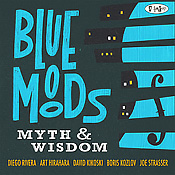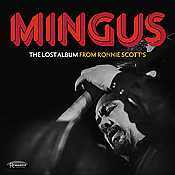Recent Recordings by Area Artists

Saxophonist, composer, and Michigan State University music professor Diego Rivera is featured on two recent albums from the Posi-Tone label, which has done much to promote his work. The first, under his own name, is Mestizo (Posi-Tone PR 8227), on which he leads a quintet with trumpeter Alex Sipiagin, pianist Art Hirahara, bassist Boris Kozlov, and drummer Rudy Royston.
The recording is thematic, with all but two of the tracks composed by Rivera, who planned it out as an artistic declaration of his social and political passions, firmly rooted in his Mexican-American identity, but also asserting his respect for all cultures. Right away, on the first tune he tackles current issues with “Battle Fatigue,” written, as he observes in his artist notes, moments after the conviction of George Floyd’s murderer. His extended hard-edged solo here, punctuated by cries, expresses fully his own fatigue with “encounters with prejudice and racism.” As the recital progresses, he programmatically explores Chicano survivalist attitudes, as in “Rasquache,” the difficult and often tragic fate of Mexican manual laborers in “Bracero,” or the odious policies of separation of families at the Southern border in “Canción De Cuna.” The final composition, which gives its name to the album, “Mestizo,” brings it all together as a celebration of the unique and original cultural blending that creates American art: the ability “for Mexican-American, Indigenous, African, Afro-Latino and straight ahead Jazz to coexist in the same musical statement without diminishing any one style.” And, indeed, most of Rivera’s compositions here combine a rich array of Latin rhythms and melodic patterns with mainstream modern jazz harmonies, providing a variety of vehicles for inspired blowing. Even when tackling Kenny Dorham’s “Escapade” (hard to think that it was originally recorded almost sixty years ago) he reimagines the tune in an Afro-Cuban manner.
The heartfelt programmatic nature of the album works extremely well and conveys the composer’s worldview in a convincing manner, but the message never gets in the way of pure music making. The other members of the quintet are well matched and fully involved with the program, handling the various rhythms with aplomb and soloing with passion when required.

Rivera is also featured on a very different album from the same label, Blue Moods: Myth & Wisdom (Posi-Tone PR 8225), this time in a collective quartet, with Hirahara and Kozlov as on Mestizo, but with Joe Strasser on drums, and Dave Kikoski taking over on piano on three cuts. This is likewise a concept album, but rather than feature contemporary works, it explores ten compositions by Charles Mingus. Apparently, this is the first in a series of Blue Moods albums dedicated to exploring the compositions of jazz musicians “who are regularly proclaimed as masters by the critics, languish in relative obscurity, while their compositions remain recondite, or at best, largely unfamiliar to a vast segment of contemporary audiences.” It will be interesting to see who they choose next in this series, but for now we have the album dedicated to the works of Mingus. While it is true that his compositions have rarely been touched in mainstream jazz, they have not been completely ignored. There have been tribute albums, and one is undoubtedly stellar, Pepper Adams Plays the Compositions of Charles Mingus, which featured Detroiters: in addition to the leader, it included Thad and Hank Jones, Charles McPherson, and Paul Chambers, but that was released in 1964. More recently, Kevin Mahogany, Wynton Marsalis, and Harry Skoler, among others, have released CDs comprised of his works, and the Mingus Big Band, formed in 1991 by the bassist’s widow Sue Mingus, has been playing weekly in New York at various venues and making recordings, currently co-led by Boris Kozlov, who appears on both albums reviewed in this section.
This reprisal of Mingus works differs from those enumerated above because it is a quartet date, with just one horn, whereas the others all use larger ensembles, as did the composer on most of his earlier albums, from which most of the tunes on Myth & Wisdom derive. As a result, it was impossible to recreate the polyphony and countermelodies and the calculated chaos that were so often part of the Mingus aesthetic. At the same time, this allowed Rivera and friends to find their own ways with the repertoire so that rather than aim at recreating the originals, they sought to adapt them to a different artistic vision. Mingus loved chaos, while this quartet consists of highly schooled and very disciplined players and they explore tunes such as “Better Get it in Your Soul” or “Pithecanthropus Erectus” in a straight-ahead jazz manner, not as classics to be imitated and venerated, but as vehicles for interpretation. This is a very tight group, whose mutual familiarity is immediately evident.
On both albums Rivera plays with unflagging controlled inspiration, and the excellent sound engineering captures well his rich personal tenor sound, burnished with lovely overtones ringing on its edges. He is not a saxophonist, but a tenor man, someone born to play this horn and not any other, determined by the stars at birth. Throughout, he plays with a marked authority, disciplined and yet emotional, with finely organized solos filled with long developed lines.

Fortuitously, April brings a hitherto unknown — officially at least — album by none other than Charles Mingus himself, recorded in a club during a transitional period, just before he formed his last great group with George Adams and Don Pullen, and temporarily without his faithful drummer Danny Richmond, who had taken a brief pause to work with the jazz-rock band Mark-Almond. In the summer of 1972, Mingus did a tour of Europe, utilizing two great Detroiters: altoist Charles McPherson, who had worked with him often, and drummer Roy Brooks. Over two nights the band was recorded at Ronnie Scott’s nightclub in London, but the results were never released. There have been bootlegs of other gigs during the tour, illegally taped or released, including nights with Dexter Gordon, Dizzy Gillespie, and Ben Webster sitting in, as well as of the Soho one presented here, but this is the first properly and legally issued release of Mingus: The Lost Album from Ronnie Scott’s (Resonance Records), with Jon Faddis, trumpet, Charles McPherson, alto sax, Bobby Jones, tenor and soprano sax, John Foster, piano, and Roy Brooks on drums/musical saw, from August 14 and 15, 1972. These nights were professionally recorded in a mobile studio that was brought in especially for the occasion and the tapes were properly restored and remixed resulting in impressive sound.
By the time the group had arrived in England, they had properly gelled, playing essentially the same repertoire for almost a month on an almost nightly basis (the notes state that this was the end of his Summer 1972 tour, but it went on until the end of August in other countries and then Mingus had to replace some of the members of the group and continue playing in Europe). This is a rollicking almost two-and-a-half-hour series of sets with a mixture of classic Mingus tunes, such as “Orange was the Color of her Dress, Then Silk Blue” and “Fables of Faubus,” each clocking in at over half an hour, to snippets such as Charlie Parker’s “Ko Ko,” which apparently served as their theme song, “When the Saints go Marching In,” referred to as “Pops” in honor of Louis Armstrong, and “Air Mail Special.” The opening “Orange,” with its top time sections and changes of tempo, is quintessential Mingus, as the leader plays virtual duets with each soloist, Brooks keeps shifting his patterns, and the whole band comes in and out time and again, bringing back parts of the different strains. The bass is well recorded and allows us to hear Mingus in his prime, his big tone resounding, his inventiveness seemingly infinite, as he seems to encapsulate the whole history of jazz in his playing, all the while mercilessly leading the band from his instrument. The first solo is by pianist John Foster, who is virtually unknown except for his stint with Mingus, but who was an inventive musician who fit in perfectly in this context. Bobby Jones then has a long outing, one of his rare soprano solos, and proves to be a robust player of the smaller sax. Listening to all this, one is reminded of Whitney Balliett’s observation that “a successful Mingus number invariably suggests a transcontinental train rocking and blazing through the night.”
The tune ends and then immediately the leader moves on to the blues, with a long a capella solo, occasionally punctuated by piano chords, which becomes a very traditional mid-tempo “Noddin Ya Head Blues,” sung by Foster; McPherson then takes over, preaching with bebop blues flavors, followed by the then nineteen-year-old Faddis very much still in the Gillespie mold. Foster comes on with a lovely solo, citing “Sentimental Journey,” and working in tandem with both bass and drums as they comment on each other, handing it over to Jones, back on his usual tenor, playing in his own personal manner, reminding us of what a fantastic player he was, who should be better remembered. Jones hands it over back to the bassist and just when you think that this will be the symmetrical ending, Brooks enters with an outing on his musical saw! Really the blues!
This was an excellent Mingus edition, with all members tuned in to the combination of chaos and virtuosity that was required of them. Faddis was new to all this, but fits in well, Jones and McPherson had been with Mingus before, especially the former, as had Foster. Roy Brooks is a perfect Mingus drummer, very different from Danny Richmond, providing the rhythmic carpet, when necessary, but interacting strongly with ensembles and soloists, attuned to the stops and turns and recurrent tempo shifts required by the leader. It is good to have this one.
